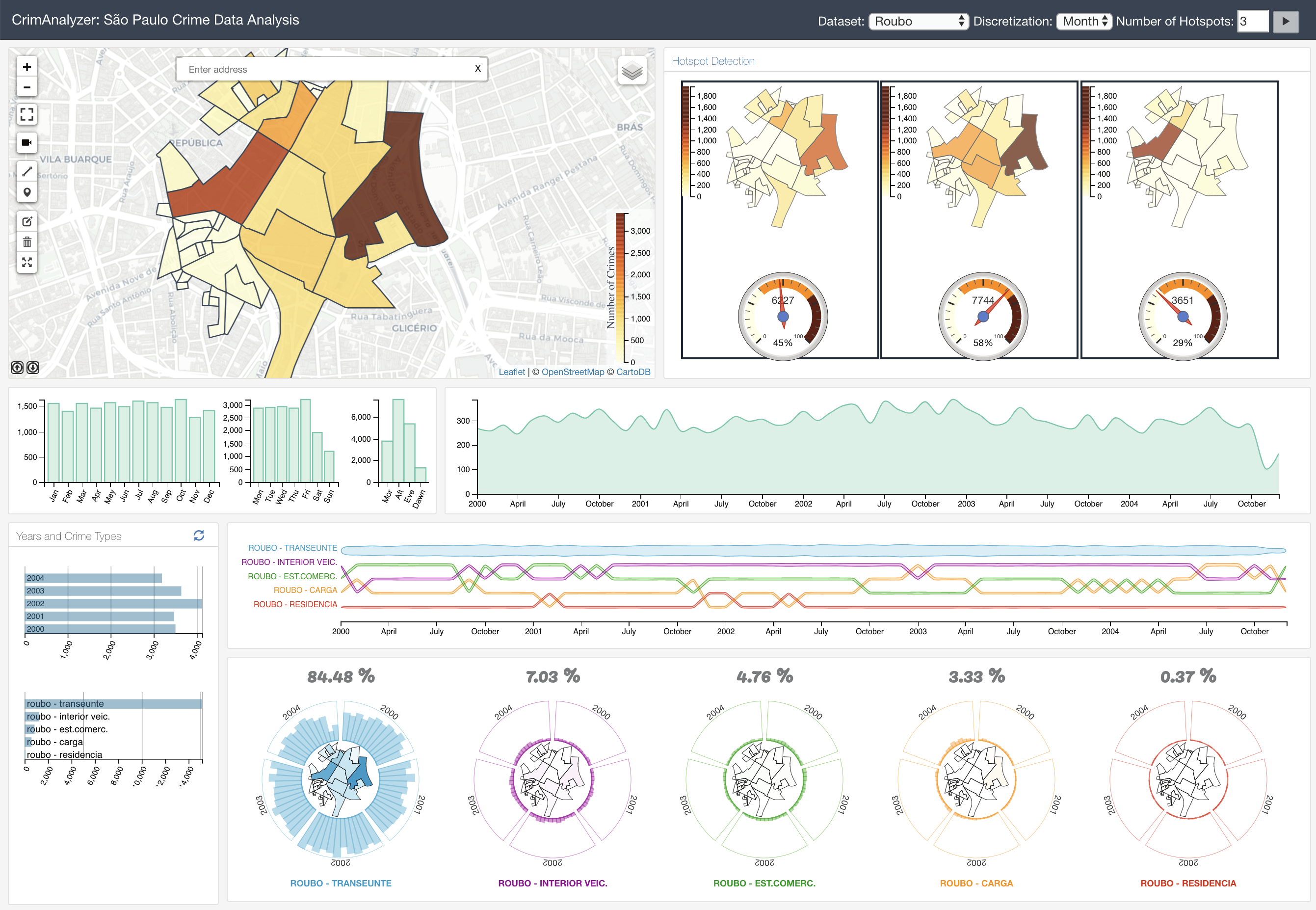CrimAnalyzer: Understanding Crime Patterns in São Paulo

CrimAnalyzer system: the spatial and temporal interactive views enable the exploration of local regions while revealing their criminal patternsover time.
Publication Details
- Venue
- IEEE Transactions on Visualization and Computer Graphics
- Year
- 2021
- Publication Date
- January 4, 2021
- DOI
- https://doi.org/10.1109/TVCG.2019.2947515
Abstract
São Paulo is the largest city in South America, with crime rates that reflect its size. The number and type of crimes vary considerably around the city, assuming different patterns depending on urban and social characteristics of each particular location. Previous works have mostly focused on the analysis of crimes with the intent of uncovering patterns associated to social factors, seasonality, and urban routine activities. Therefore, those studies and tools are more global in the sense that they are not designed to investigate specific regions of the city such as particular neighborhoods, avenues, or public areas. Tools able to explore specific locations of the city are essential for domain experts to accomplish their analysis in a bottom-up fashion, Revealing how urban features related to mobility, passersby behavior, and presence of public infrastructures (e.g., terminals of public transportation and schools) can influence the quantity and type of crimes. In this paper, we present CrimAnalyzer, a visual analytic tool that allows users to study the behavior of crimes in specific regions of a city. The system allows users to identify local hotspots and the pattern of crimes associated to them, while still showing how hotspots and corresponding crime patterns change over time. CrimAnalyzer has been developed from the needs of a team of experts in criminology and deals with three major challenges: i) flexibility to explore local regions and understand their crime patterns, ii) identification of spatial crime hotspots that might not be the most prevalent ones in terms of the number of crimes but that are important enough to be investigated, and iii) understand the dynamic of crime patterns over time. The effectiveness and usefulness of the proposed system are demonstrated by qualitative and quantitative comparisons as well as by case studies run by domain experts involving real data. The experiments show the capability of CrimAnalyzer in identifying crime-related phenomena.
Cite this publication (BIBTEX)
@article{2021-CrimAnalyzer,
title={CrimAnalyzer: Understanding Crime Patterns in São Paulo},
author={Germain García-Zanabria and Jaqueline Silveira and Jorge Poco and Afonso Paiva and Marcelo Nery and Claudio Silva and Sergio Adorno and Luis Gustavo Nonato},
journal={IEEE Transactions on Visualization and Computer Graphics},
year={2021},
url={https://doi.org/10.1109/TVCG.2019.2947515},
date={2021-01-04},
volume={27},
issue={4}
} 